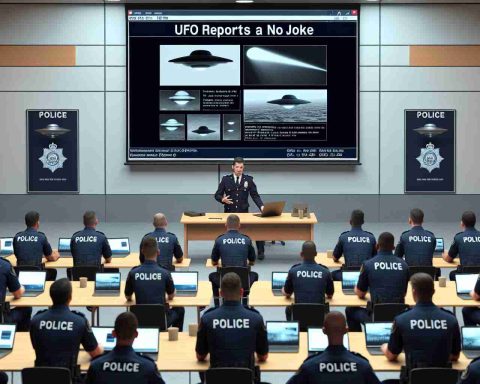Unlocking the Secrets of the Sun’s Atmosphere
A groundbreaking mission has taken flight as two satellites embark on a journey to transform our understanding of the Sun’s corona. This ambitious project is set to generate extended solar eclipses, enabling scientists to delve deep into the secrets of the solar atmosphere.
The Sun’s corona is a region teeming with activity, where solar winds and coronal mass ejections originate. These phenomena have significant impacts on space weather, which can interfere with technology on Earth. Understanding the corona is pivotal for safeguarding our planet against potential solar storms that could cause widespread blackouts.
While a wealth of information exists regarding the inner and outer corona, the elusive mid-corona remains largely uncharted territory. Current solar observation technologies excel at capturing images of either the solar surface or outer corona, often overlooking the critical mid-corona due to sensitivity limitations.
However, total solar eclipses offer a fleeting opportunity to view this atmospheric region. During such an eclipse, when the Moon perfectly blocks the Sun, the mid-corona becomes visible. Unfortunately, these events are rare and unpredictable, posing challenges for researchers aiming to study solar activity.
By employing two specially designed satellites to create prolonged periods of solar eclipses, scientists hope to gain valuable insights into the Sun’s behavior that have been inaccessible until now. This innovative approach could revolutionize our understanding of solar dynamics and enhance the safety of Earth against space weather events.
Revolutionizing Solar Research: The Next Frontier in Understanding the Sun
Exploring the Mid-Corona: A New Era of Solar Science
Recent advancements in solar observation technology are set to break new ground in the study of the Sun’s corona, particularly the mid-corona, an area that has long been shrouded in mystery. The unprecedented mission involving two cutting-edge satellites aims to provide extended solar eclipses, opening a window into this crucial but underexplored region of the Sun’s atmosphere.
Features of the Mission
1. Satellite Technology: The mission utilizes two specially designed satellites equipped with advanced imaging technologies that surpass traditional solar observation tools. These satellites will gather data using high-resolution cameras and spectrometers to capture detailed images of the mid-corona.
2. Synthetic Eclipses: By maneuvering the satellites to simulate conditions similar to a total solar eclipse, researchers will create extended periods during which the mid-corona can be observed without the limitations typically encountered during natural eclipses.
3. Data Collection: This innovative approach allows for continuous monitoring of solar phenomena, such as solar winds and coronal mass ejections, which have significant implications for space weather.
Pros and Cons of the New Approach
# Pros:
– Extended Observation Periods: Unlike natural eclipses that last only a few minutes, synthetic eclipses can be sustained for hours, allowing for more comprehensive data collection.
– Enhanced Understanding of Space Weather: Insights gained from this research could improve predictions of solar storms and their potential impacts on Earth’s technology and infrastructure.
– Innovative Technology: The use of satellite technology paves the way for new methodologies in solar observation, potentially revolutionizing the field.
# Cons:
– High Costs: Developing and launching satellites for this mission involves significant financial investment, which can be a barrier to entry for similar future projects.
– Technical Challenges: Ensuring the satellites operate effectively and maintain their positions for synthetic eclipses presents various engineering challenges that must be overcome.
Use Cases of Findings
The anticipated data from these satellites could lead to advancements in various fields, including:
– Telecommunications: Improved models for predicting solar storms could enhance the reliability of satellite communications and power infrastructure.
– Climate Studies: Understanding solar activity may offer insights into its effects on Earth’s climate conditions, contributing to more accurate climate models.
– Astronomy: New findings may provide context for other solar systems, enhancing our comprehension of stellar dynamics across the universe.
Market Analysis and Future Trends
The demand for understanding solar phenomena is increasing, particularly as society becomes more reliant on technology susceptible to space weather. Investments in solar observation missions are poised to rise, emphasizing the importance of safeguarding Earth’s technological infrastructure. Moreover, the success of this mission may inspire further exploration of other celestial bodies, potentially leading to a new frontier in space research.
Conclusion: A Bright Future for Solar Science
The endeavor to study the mid-corona through synthetic eclipses marks a significant leap forward in solar science. By enhancing our understanding of solar activity and its impact on Earth, this mission not only represents a scientific breakthrough but also offers critical insights for safeguarding our planet. As we await the results of this ambitious project, the implications for technology, climate science, and beyond are profound.
For more updates on solar research and space missions, visit NASA.



















